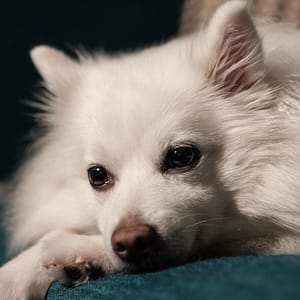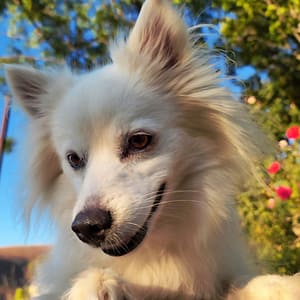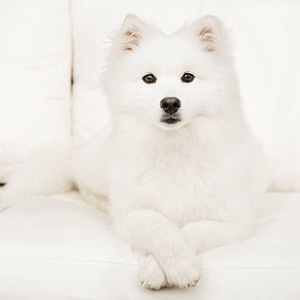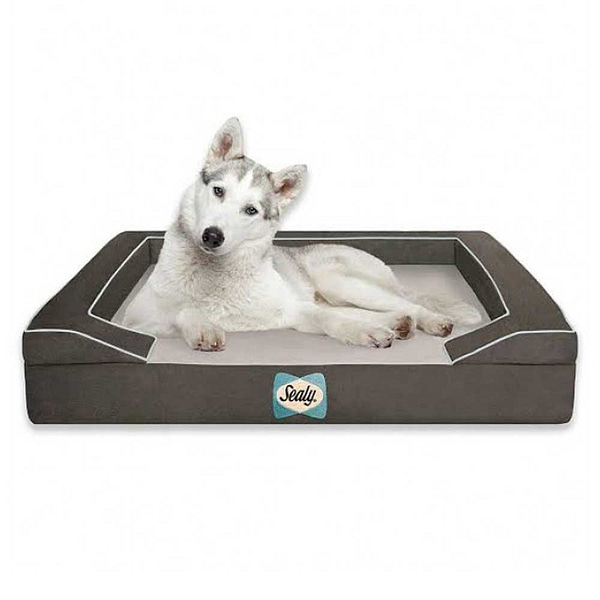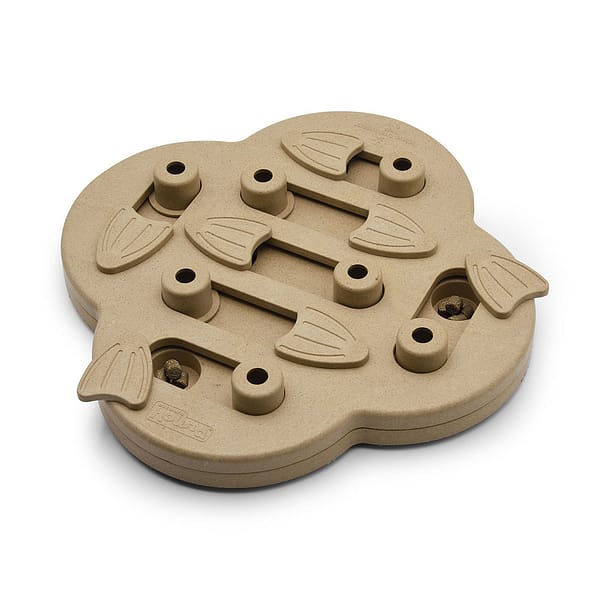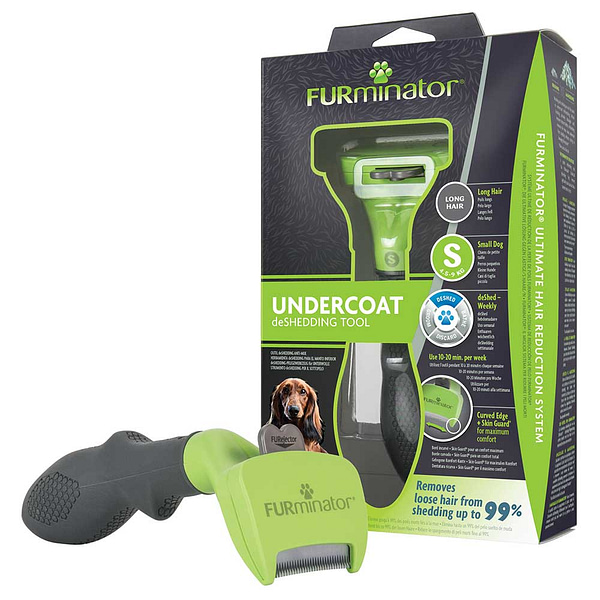Like a few of the breeds on our list, the name of the American Eskimo dog is a misnomer… since the dog has German origins and has nothing to do with indigenous peoples (Eskimos). However, mention the American Eskimo dog, or Eskie, and people swoon. This is a small(ish), white, intelligent and human-loving dog who looks like a cloud with legs and a smile. Energetic, affectionate, discerning and gorgeous, the Eskie is known for his circus tricks and his ability to tightrope-walk his way right into human hearts!
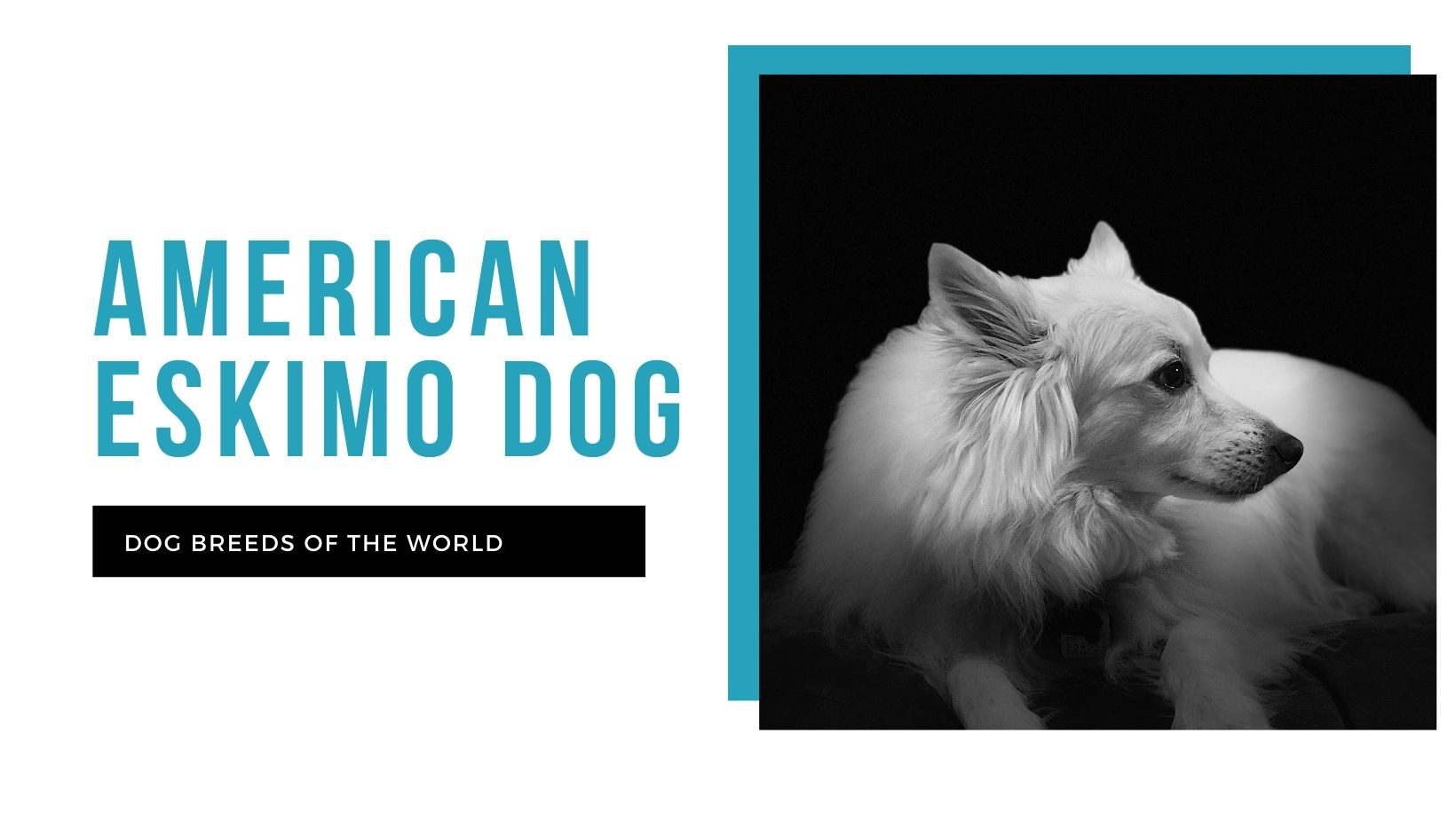
American Eskimo dog
History
The early 19th century brought German immigrants to American shores, and along with those Germans came a myriad traditional customs: beer, food, religion, culture… and the German spitz dog. He was originally a farm dog – obedience and work ethic seemingly built into his thick coat and eager eyes – but soon became part of the circus circuit across the United States. Seeing him perform and falling in love with his appearance and affinity for showiness, there was suddenly a huge demand for the little German spitz dog. Circus acts were the perfect marketing tool and puppies were sold after the shows. It’s not far-fetched to assume that most present-day Eskies share circus dog blood.
Despite the popularity of this puffball circus dog, there was a lot of anti-German sentiment at the start of the 20th century and leading into World War I and II, so the German spitz breed was renamed the American spitz or American Eskimo dog. The reference to ‘American Eskimo’ is purportedly after the name of breeding kennels in Ohio. In spite of the Eskie’s popularity and the long history of the breed, a breed club (the American Eskimo Dog Breed Club of America) was only established in 1985 and the breed was only recognised by the American Kennel Club (AKC) in 1995. He features in the Non-Sporting Group (Utility Group in SA).
The Eskie is recognised in three sizes: standard (43 cm; 14 kg), miniature (35 cm; 9 kg), and toy (30 cm; 4,5 kg).
Temperament
Intelligent, fun-loving, friendly, affectionate, loyal and versatile – it’s no wonder the American Eskimo dog is so beloved and sought-after. He’s prepared to perform tricks and keep his people entertained, but he also simply loves being in his family’s company, and as long as you’re happy, he’s happy. He’s energetic and alert, and Eskie puppies can be a handful of energy, but they do get a bit calmer with age.
As long as he’s properly socialised and trained, part of the family and well exercised, the Eskie has a winner of a personality, is upbeat and pleasant. A bored, frustrated Eskie will chew, bark incessantly and become destructive. He shouldn’t be left alone for long periods of time as he is prone to separation anxiety.
Health
American Eskimo dogs are generally healthy and can live for up to 15 years. The breed is susceptible to eye and joint diseases such as:
- Eye issues: Progressive retinal atrophy; juvenile cataracts
- Orthopaedic issues: Hip dysplasia; Legg-Calvé-Perthes disease
These diseases are easily avoidable if purebred Eskies are tested and cleared. Any dogs with the above problems should not be bred.
Exercise Requirements
Active, intelligent, agile and curious, the American Eskimo dog needs an outlet for his pent-up energy, but also to exercise his brain. He thrives on having lots of different toys to play with, but also won’t turn his nose up at complex training and performing tricks that make full use of his muscles and mind. Despite his ancestors being used for farm work, the Eskie loves being indoors, participating in whatever his humans are doing. He loves to bond, so training, games and generally doing fun, active things together will ensure a happy, healthy dog.
Early and consistent socialisation as well as ongoing training will give you a superb Eskie who is an absolute pleasure to be around. Obedience training should be a cinch, since this is a smart, eager and highly trainable dog who loves to please and entertain. He craves family time, so any time spent training him is not merely to teach him new things, but to cement your bond with your four-legged performer!
Grooming Requirements
The Eskie’s cloud-like double coat is one of his most attractive features. It’s a thick double coat, which means two layers of fluff that need grooming. Fortunately, this coat is dirt-resistant, so it’s fairly easy to keep clean by simply brushing out his top coat and combing through the dense undercoat. The Eskie is a heavy shedder, so he does need consistent brushing to remove the loose, shed hair and prevent mats from forming. He only needs very occasional bathing or you risk drying out his skin.
Check his ears for any signs of infection (like redness or odour), trim his nails regularly and brush his teeth daily to keep his dental health in check.
Ratings
Statistics
| Size | Medium |
|---|---|
| Type | Non-sporting Group |
| Average adult weight | Variable kg |
| Average adult height | Variable cm |
| Average life span | 14 years |
| Breed family | |
| Area of origin | USA/Germany |

